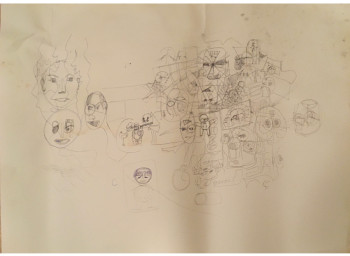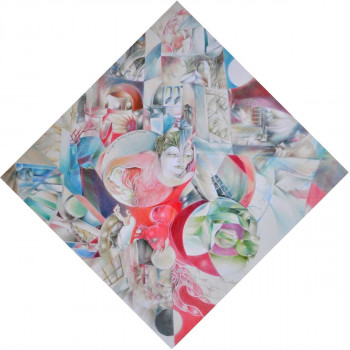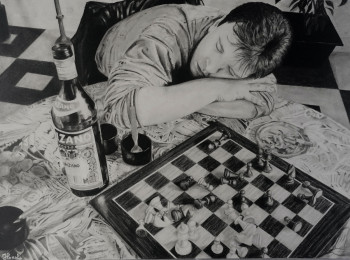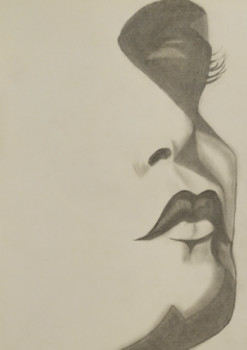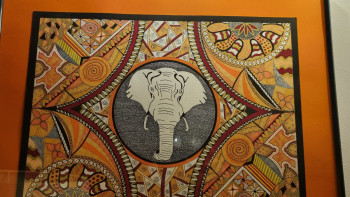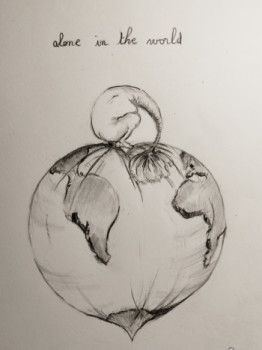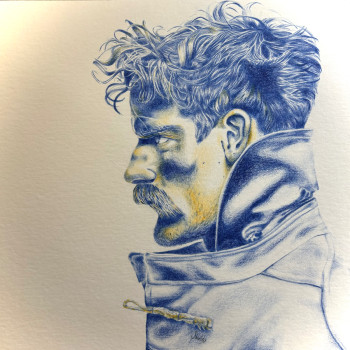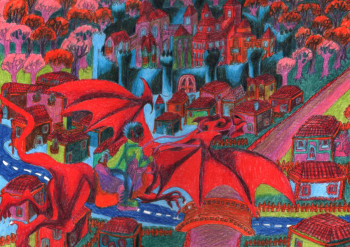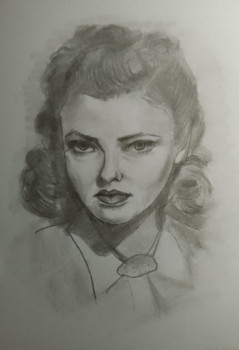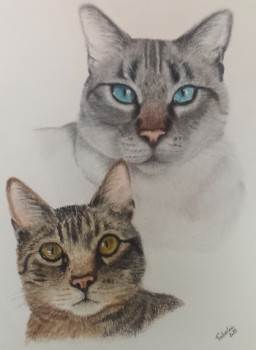
Pencil drawing
For centuries, pencil drawing has never lost its appeal among artists. From the great masters of yesteryear and contemporary creators use it. Just like painting, a pencil drawing in black or color brings a touch of life to any room in the house.
Origins of pencil drawing
It would be in Ancient Egypt that’ found the first traces of drawing, but it seems that it was among the Romans that the process was first discovered. coming a little closer to current features was initiated. For their drawings, they used a mixture of pigments, bone powder, gum arabic and Spanish white which they inserted into a metal point.
From In the 12th century, mines made from an alloy of lead and tin appeared; artists use it to draw their sketches and the fine lines of the illumination. To protect the mine, it was surrounded with wood or leather. This practice continued until the 18th century and developed thanks to artists such as Rembrandt and Poussin.
the Italian Renaissance appears the silver point which leaves a black silver line. On paper. A version somewhat similar to the black graphite paper pencils that we know today did not appear until the middle of the 16th century, in England. The drawing mechanical pencil has been designed by Swiss-German naturalist Conrad Gessner. In 1795, Nicolas Jacques Conté obtains a paste with gray clay and graphite which is close to the current mine. The wood used to surround it is linden, spruce, or cedar. Ultimately, we must Lothar Von Faber, in 1839, the different tonal values of the mine thanks to its scale made up of letters and numbers (H, B, 2H, 2B…) to indicate its tenderness. or hardness.
The advent of colored pencils
Graphite drawing was for a long time contented with art. tones of black and gray – with very often self-tests. sanguine (red clay) or sepia chalk (with dried cuttlefish ink). Colored pencils were not used. invented that’ at the end of the 18th century, simultaneously by the Frenchman Nicolas-Jacques Conté and Joseph Hardmuth, an Austrian. The first attempts used a lead made of wax and pigments. In the 19th century, a baking paste was used. based on pigments, diluted kaolin; in an aqueous base without cooking and a starch as a binder to produce colored pencils industrially. In the 20th century, wax was added to them and particular attention was paid to their appearance. resistance to the light of the pigments, the hardness of the pigments of the mine and the quality of the mine wood used. More recently, soluble watercolor colored pencils will appear to give a colorful sketch. and diluted or to emphasize certain features in a work of art. watercolor.
Masters of pencil drawing from yesterday to today today
Renowned artists such as Leonardo da Vinci, Rembrandt, Poussin, Toulouse Lautrec, Eugène Delacroix, Jean-Auguste Ingres, John Singer Sargent, Picasso and several others created by Authors used pencil drawing to trace sketches of their works. paint.
Draughtsmen who use pencil for their creations appreciate the range of possibilities that this medium allows. Depending on the type of lead, the sharpening, the grain of the paper used, several techniques become possible, from a simple outline to gradients obtained by different processes including hatching , blending, rubbing... The topics are almost endless...
- portrait
- caricatured characters
- landscape
- architectural drawing
- themes that suggest a relationship to nature (organic, vegetable, marine).
How to choose a pencil artwork?
The choice of a work of art in pencil can be oriented towards the individual. towards the theme it represents, or for the contrasts and the play of light controlled by the artist; it can also be a simple crush. As we can see, pencil drawing, in black or color, constitutes an extremely versatile form of artistic expression. To bring out the quality and originality, it is recommended to frame a pencil art drawing. The chosen framing or mat must harmonize with the surroundings. the entire decor of the room in which the drawing is installed. A black and white drawing can find an ideal place both in a workplace and in a home.

